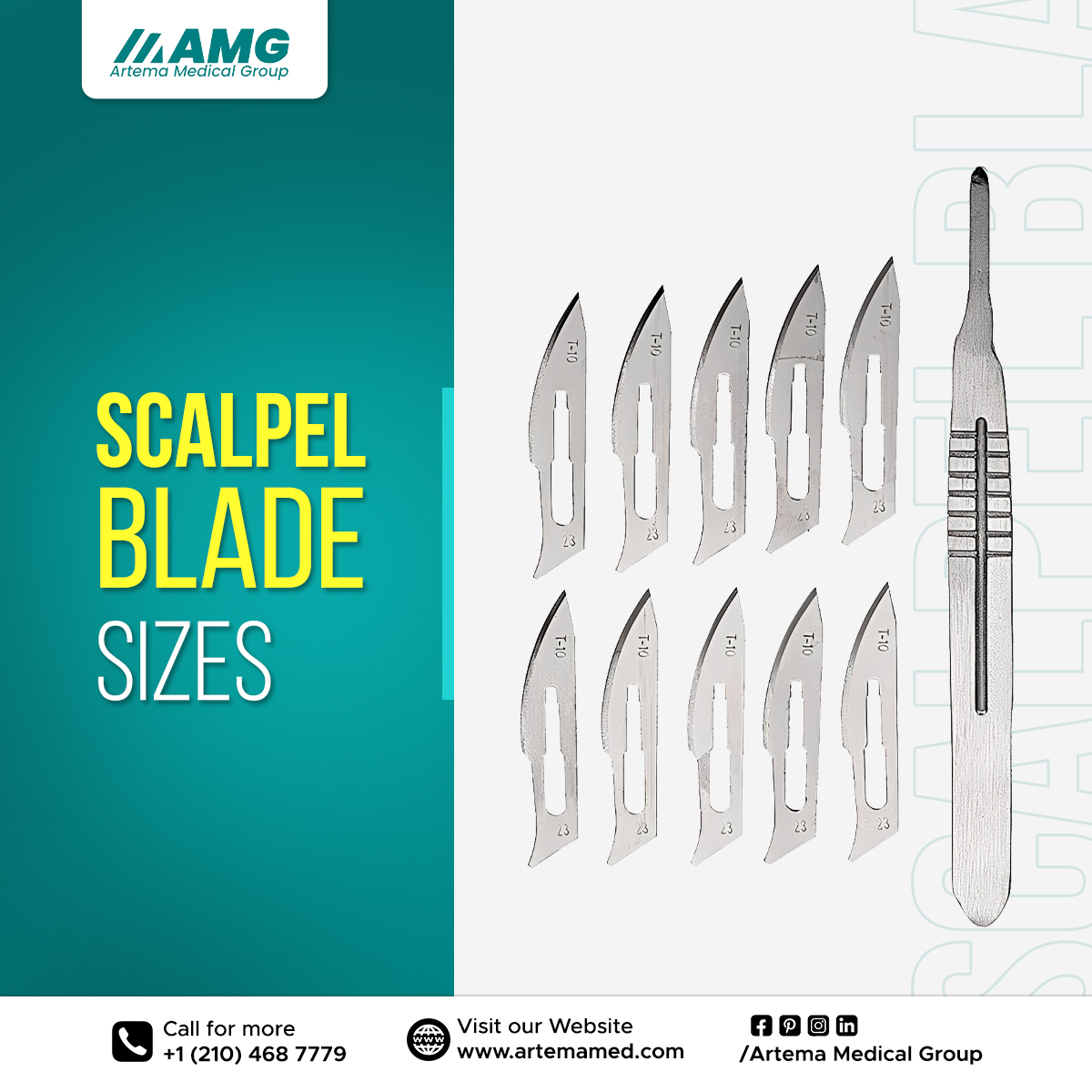In surgical practice, the scalpel is one of the most trusted tools. It plays a key role in making accurate incisions, no matter how simple or complex the procedure is. A scalpel consists of two main parts: the blade and the handle. The size and shape of the blade determine its specific use in a medical procedure. Scalpel blade sizes are available in a wide range, and each size is designed for a certain type of cut or tissue. The variety in blade sizes gives surgeons more control, helps reduce tissue damage, and improves the overall quality of surgical care.
Why Blade Sizes Matter in Surgery
Each surgical case requires a different level of precision. That’s where scalpel blade sizes come into play. A large incision on thick tissue calls for a blade with a wider and longer edge, while fine or delicate work demands a smaller, more precise blade. Using the correct blade ensures that the surgeon can work efficiently and safely. When paired with the right scalpel handles, the chosen blade offers balance, comfort, and accuracy. This combination becomes even more important when dealing with sensitive areas or procedures that require exact cuts.
The Range of Scalpel Blade Sizes
There is a broad range of scalpel blade sizes used in surgery today. Smaller sizes like No. 11 and No. 15 are commonly used in fine work such as skin procedures, biopsies, and delicate tissue operations. Larger blades such as No. 20 or No. 22 are ideal for general surgery where long and deeper cuts are needed. Each blade size is designed with a specific shape, curve, and edge that fits a unique surgical purpose. These differences make it easier for surgeons to choose the best tool for the task at hand.
Matching Blades with Handles
A scalpel blade alone is not enough to carry out surgical tasks. It needs to be attached to the correct scalpel handles to function effectively. Handle types are also numbered and designed to match certain blade sizes. For example, smaller blades usually fit into handle No. 3, while larger blades are paired with handle No. 4. The scope of surgical scalpels depends greatly on this pairing. When the blade and handle fit well, the surgeon gains better grip, control, and precision during surgery.
Scalpel Blade Sizes in Different Medical Fields
Scalpel blade sizes are used in many different areas of medicine. In general surgery, larger blades are used for abdominal or orthopedic procedures where broad incisions are necessary. In contrast, plastic surgery and dermatology often rely on smaller blades for cleaner and more controlled cuts. Dental surgery also requires unique blade sizes to work around small structures like gums and teeth. Each medical field benefits from the variety of surgical scalpels that come with different blade sizes and matching scalpel handles.
Scalpel Blades in Emergency Medicine
In emergency medicine, time is critical. Surgeons and emergency doctors need tools that help them act fast while maintaining accuracy. Scalpel blade sizes such as No. 10 or No. 20 are often chosen for quick and deep incisions. These blades allow healthcare providers to open the body rapidly during life-saving procedures like trauma surgery or tracheotomy. The variety in blade sizes ensures that professionals have access to the right surgical scalpels under urgent conditions.
Blade Sizes in Minimally Invasive Surgery
Modern surgical techniques now favor minimally invasive approaches. These methods involve smaller cuts, reduced tissue damage, and faster healing. As a result, scalpel blade sizes that are smaller and sharper have become more important. Surgeons may use fine blades for small openings needed in laparoscopic or endoscopic procedures. These blades must be paired with lightweight scalpel handles to ensure comfort during long and careful operations. The evolving nature of surgery continues to expand the scope of scalpel blades and how they are used.
Training and Education in Blade Use
Medical students and surgical trainees must learn the use of different scalpel blade sizes early in their education. Understanding how each blade works and what it is used for helps them make better decisions in real-life situations. Training includes identifying different types of surgical scalpels and learning how to attach blades correctly to scalpel handles. Students also practice how to make clean incisions and handle tissue with care. The more they understand blade types, the more confident they become in the operating room.
Scalpel Blades in Veterinary Medicine
Veterinary medicine also relies on a wide range of scalpel blade sizes. Animals come in all sizes, from small pets like cats and dogs to large animals like horses and cows. Each species requires different surgical tools. Veterinarians use surgical scalpels of various sizes based on the size and type of animal they are treating. Blade size choice is important in this field as it ensures safer cuts, less pain, and better healing for animals.
Advantages of Having Multiple Blade Sizes
Having access to a wide variety of scalpel blade sizes provides many benefits. Surgeons can match the blade to the procedure, which leads to more accurate cuts and less tissue damage. This flexibility also allows for better planning and smoother operations. It reduces the risk of errors and shortens the duration of surgery. When the right scalpel handles are used with the correct blade, it further enhances the tool’s effectiveness. This broad selection of surgical scalpels improves the overall quality of surgical care.
Innovation and Future Developments
As surgical tools continue to evolve, so do scalpel blade sizes. New designs are now being developed for robotic surgeries and high-precision procedures. These blades may be smaller, thinner, or have custom edges that fit the needs of next-generation techniques. With the help of technology, future surgical scalpels may offer even more control and efficiency. The future scope of scalpel blades includes smart materials, disposable blades, and ergonomic handles designed for long hours of use.
Safety and Sterility Considerations
Another important factor in the scope of scalpel blade sizes is safety. All blades must be sterile and properly handled to prevent infections. Surgeons must know how to attach and detach blades safely without causing injury to themselves or others. Many surgical scalpels now come in sterile, single-use forms to reduce risk. Whether reusable or disposable, the tools must meet hygiene standards and function as intended. The correct blade size, along with a well-fitting scalpel handle, supports both patient safety and user comfort.
Conclusion: Scalpel Blade Sizes Support Surgical Success
The scope of scalpel blade sizes is broad and continues to grow with advances in medical science. Each size serves a unique purpose and plays a major role in how effectively a procedure is carried out. When combined with the correct scalpel handles, these blades become powerful tools for precise and safe surgery. From human to veterinary medicine, and from general to specialized fields, surgical scalpels with varied blade sizes make all the difference. A deeper understanding of blade types not only supports surgical success but also ensures better patient care, faster healing, and reduced risks during operations.
More info: Artema Medical

